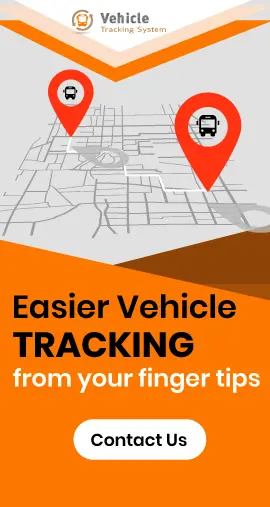Vehicle Tracking ROI vs COI: A Complete Guide
April 20th, 2020
It is a challenging task for fleet managers to keep breaking new grounds and improving an organization’s profitability. A fleet manager has to achieve the profitability goals set by the organization, keeping in mind the cost fluctuations, availability of workforce, time constraints, and business interests.
This means that fleet managers have to implement the right strategies to achieve desired fleet management efficiencies. The aim of this post is to discuss two important concepts – Return on Investment (ROI) and Cost of Ignoring (COI) – with respect to vehicle tracking.
This guide should provide fleet managers with the information they need to focus on effectively managing their fleets.
What Is ROI ?
Most fleet managers are familiar with the term Vehicle Tracking ROI. It is a performance metric that evaluates the effectiveness of an investment. It can also be used to compare the efficiencies of multiple investments. ROI directly measures the returns provided by a business with respect to the amount invested.
Read Also: Understanding ROI- What it is and How it can Help Improve your Vehicle Tracking Productivity?
It is expressed as a ratio, or in percentage terms, and is arrived at by dividing the difference between the Current Value of Investment and Cost of Investment by the Cost of Investment. Multiplying the ratio by 100 represents ROI in percentage terms.
The Current Value of an Investment represents the proceeds that an organization can receive from the sale of interest in the investment.

This metric is very commonly used for making investment decisions because of its simplicity and versatility. The objective of applying this metric is to improve profitability as ROI focuses on maximizing revenue by identifying the right investment option.
A high ROI indicates that the gains on investment compare favorably to the cost. One of the risks of opting for ROI calculation may be that it does not capture the importance of short-term and long-term investments. It is, therefore, important to consider the Net Present Value while calculating the ROI for long-term investments.
What Is COI ?
The Cost of Ignoring (COI) refers to the amount of savings lost when organizations fail to make a strategic investment. If a company goes ahead with an investment when an opportunity is presented, it would immensely contribute to improving its operational efficiency.
In the case of fleet managers, it refers to the incremental operating costs that result from either an improper use of telematics or the lack of a vehicle tracking system.
The economic climate around the world continues to challenge organizations across industries. Declining profit margins, downsizing, and consolidation have become stark realities. This has forced companies to focus their efforts on maximizing bottom line instead of growing their revenues.
Fleet management costs make up a major part of the total operating budget of a company. When revenues remain flat, focus shifts to cost-reduction. This is the core aspect of COI analysis.
ROI vs COI
Vehicle Tracking ROI and COI share the same objective which is maximizing profitability. However, the similarity between the two stops there. ROI focuses on maximizing the revenue by identifying the right opportunities to invest money.

On the other hand, COI focuses on savings and minimizing operating costs. The savings can be determined with the help of fleet management system reports and driver scoring algorithms.
Fleet Costs
In order to calculate the existing as well as probable telematics-related savings of fleets, the operating costs need to be broken down into fixed, variable, and driver salary.
This enables businesses to work out a fleet-specific per mile cost model. Further, the two key characteristics that have a profound impact on fleet costs are mileage and vehicle class.
Impact of Mileage and Vehicle Class
The class of vehicles that make up a fleet impacts its operating costs. The cost per mile breakdown for heavy-duty trucks will be different from that for medium- and light-duty vehicles.
This means that the fleet savings data for the different classes of vehicles should be segregated in the summary report. Similarly, the mileage covered by the vehicles significantly impacts the per-mile costs. There are two reasons for this:
- Driver salaries and fixed vehicle costs would be spread over lesser total miles
- Vehicles that cover fewer miles would are most likely to be driven municipal roads for longer periods rather than freeways and highways which increases these vehicles’ variable costs per mile
As such, the cost per mile metric is negatively correlated to the annual mileage of a vehicle. This is to say that the cost per mile will be lower when the miles covered by a vehicle are more. Therefore, it is important to determine the average annual mileage of the fleet and adjust the cost per mile data for each vehicle.
Driver Score

The COI of a fleet can be calculated by assigning scores to each driver in respect of savings categories such as safety, maintenance, fuel, and productivity. These scores help businesses identify good and bad drivers and arrive at existing as well as possible savings values for each vehicle in a fleet.
Identifying Key Cost-Saving Opportunities
Safety
It is of paramount importance that organizations operating vehicle fleets put in place systems that could help reduce vehicle collisions. This is because vehicle crashes can cause huge financial losses to companies. According to experts, thirty-one percent of all fatal collisions are caused by speeding, collisions, and aggressive driving behavior of drivers. Further, the use of seat-belt was found to reduce fatality risk by up to 60 percent.
Read Also: 10 Ways To Improve Your ROI with Vehicle Tracking System
Therefore, fleet managers must monitor driver behavior in order to quantify driver safety savings. They should also proactively coach drivers by using telematics. Real-time audible alerts and feedback provided by advanced in-cab driver tools help drastically reduce on-duty accidents.
According to top insurance companies, the use of telematics for fleet management reduces accidents by 45 percent and accident payout costs by 50 percent. The drop in accident claims, in turn, reduces comprehensive insurance costs by 5 to 25 percent.
Fuel
Fuel expenses make up a large part of fleet operational costs. It is a tough task to manage the fuel costs because of the number of variables involved, including fuel price fluctuation and inconsistency in driver behavior. Heavy braking and rapid acceleration during highway driving reduce fuel economy by as much as 33 percent. Idling and speeding also impact fuel consumption.
Studies have shown that organizations can cut fuel costs by up to 14 percent through effective use of telematics. However, driver training is crucial for achieving cost reductions.
This means that it is important to impress upon drivers to drive at optimum speeds in order to accrue savings. Real-time driver idling alert systems may be employed to drastically to reduce wastage of fuel and vehicle idling costs.
Maintenance
Preventive maintenance is important, but vehicle misuse and aggressive driving add unnecessary costs. Research studies show that aggressive driving behaviors primarily contribute to increasing maintenance costs. Aggressive driving behaviors include hard accelerations, cornering, and braking.

They increase the vehicle’s wear and tear and reduce tire and brake life. Further, scheduled and non-scheduled maintenance will have to be done more frequently. This, in turn, increases the variable cost per mile.
Telematics technology helps organizations reduce repair and maintenance costs by up to 14 percent. As mentioned above, savings are related to driver behavior. Therefore, it is important to make use of real-time tools that enable in-cab alerts and driver management.
Productivity
Fleet operating costs also include driver compensations. This means inefficiency on their part can significantly increase expenses for fleet managers. Idle time of a vehicle is a key metric in determining driver productivity. It has been observed that workforce productivity can be increased and labor costs may be reduced by up to 12 percent through the deployment of vehicle tracking systems.
Final Thoughts
Fleet managers experience tremendous pressure as they have to manage the fleet costs even during deteriorating economic conditions. The costs they have to manage include those associated with vehicle procurement and disposal, fixed as well as variable operating costs, collision and insurance claims, and labor costs.
Read Also: 12 Advantages of Possessing Vehicle Tracking Software in Fleets
Data provided by vehicle tracking systems often help fleet managers in discovering more cost-saving opportunities across their fleet. This helps them to reduce the COI, improve the operating efficiency of the fleet, and grow the bottom line of the organization.


